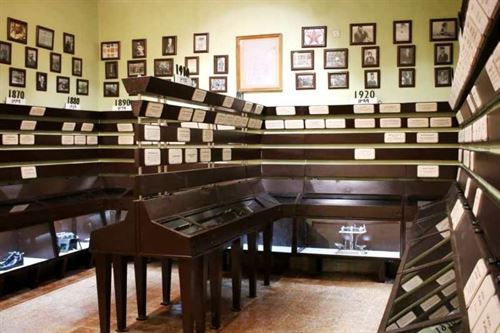Abadan Apprentice Museum Ready For Official Inauguration
Wednesday, July 11, 2018
By: Ahmad Kabi Fallahie
During the hot days of summer in southwest of Iran, Khuzestan province, the museums and cultural centers are often involved in planning to resume their activities during the next seasons, when the weather is moderate; the head of Abadan Apprentice Museum, Aminzadeh Darwish, said.
Despite hot weather, Abadan Apprentice Museum, which has been set up on the venue of Abadan technical-vocational training center, is busy with restoration of different sections, and then official inauguration.
Abadan Apprentice Museum has completed the final stages of restoration in order to be opened as the second petroleum museum in the city.
The museum which opened its doors to public temporarily during the early days of the new Iranian calendar year, began 21st March 2018, was faced with widespread welcome especially by oil industry staff and their families. the visitors response to the opening was unexpected and amazing.
The museum has displayed historical pictures and old instruments on its walls which were very exciting for those oil industry veterans who had been trained and worked with them at technical-vocational training center. Recalling past memories for the oil industry veterans was the other interesting aspect of the opening as it was interesting for younger generation as well.
accidentally, I was lucky to visit the museum during my recent travel to Abadan, where I could visit some of the museum’s staff and express my gratitude to those who are involved in developing the museum, a museum that its development has been started since four years ago under the continuing supervision of the former director of the public relations department of Petroleum Ministry and current director of the Petroleum Museums and Documents Center, Akbar Nematollahi.

During my visit to the museum, I had the opportunity to visit Farshid Khaeez, the representative of petroleum museums in Abadan who told me that most visits to the museum take place during the ending hours of the day or at night, mainly because of hot weather.
According to him, cooling the large spaces of the museum by using ordinary air-conditioners is very difficult continuing the museum is hopeful to get a system named “air-proof” for cooling its large spaces.
Khaeez continued that launching Abadan Apprentice Museum was impossible in view of many while a number of more optimistic individuals looked at it as a difficult task and at the same time costly project. Despite this, the museum project came to an end successfully and now it is ready for operation.
In addition to Apprentice Museum, Gas Station Museum was launched in Abadan last year while other large projects are underway in the city as well including an oil industry park–museum.
As far as concerned Abadan Apprentice Museum, large sheds, administrative section and exterior spaces are the main parts of the museum, even though one of the sheds which used to be for welding, at present, is not part of the museum. Furthermore, a large part of the spaces have been allocated for collecting objects and documents.
Sheds which used to be used as workshops and training centers make up the main part of the museum. These sheds now are the places where old instruments and equipment are being displayed.
The other noticeable part of the museum is where the pictures and documents are in display, consisting of five rooms. These rooms have displayed noteworthy documents and letters and the room number three includes valuable documents related to oil events in Iran since launching Abadan oil refinery in 1912 as well as other important world oil industry events.
A number of documents depict a kind of comparative history, where some Iranian oil industry events such as the first strike by workers at Abadan oil refinery is happening simulanious with similar oil industry events across the globe and could be interesting not only to visitors but to those interested in contemporary studies and oil industry developments research.
During my visit, I was told that a group of experts of Petroleum Museums has spent at least eight months on this part to provide the possibility of a kind of comparative study.
Furthermore, I heard that the museum plans to provide compact discs containing rare pictures with captions for the visitors which is promising.







